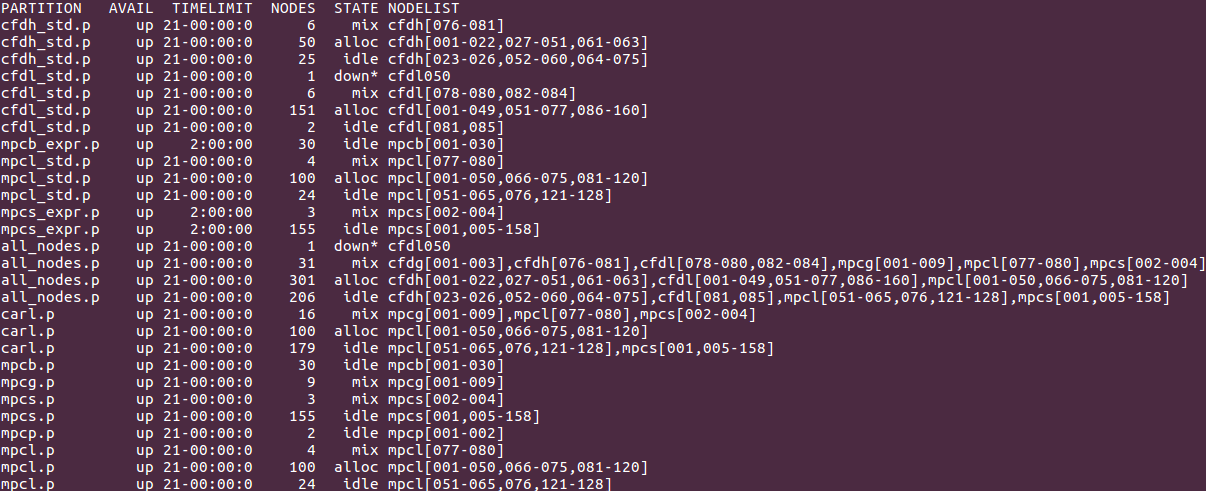Difference between revisions of "Partitions"
| Line 35: | Line 35: | ||
cfdh076 24 1.01 97568 115658 128509 | cfdh076 24 1.01 97568 115658 128509 | ||
</pre> | </pre> | ||
{{Pre| | |||
'''First line, markup working:''' and HTML comment <!--HIDDEN--> hidden. | |||
'''Second line, long text wrapping:''' all work and no play make jack a dull boy all work and no play make jack a dull boy all work and no play make jack a dull boy all work and no play make jack a dull boy all work and no play make jack a dull boy. | |||
'''Third line with raw | pipe is handled''', but the space before the pipe is lost. Up to raw 20 pipes are handled, else use <nowiki>{{!}}</nowiki> and {{!}} it's {{!}} OK. | |||
'''Fourth line, multiple spaces collapsed into one''' as in HTML and wikitext. | |||
'''Fifth line, stuck with the previous one''' if no blank line between them. | |||
'''Last line''', is actually standalone with or without a blank line. | |||
}} | |||
Revision as of 11:45, 13 February 2017
To manage the large amount of nodes on CARL and EDDY, its important to work with partitions. Partitions will optimize the way resources are given out to users and to ensure that everyone can submit jobs and receive results as fast as possible.
Since we are using SLURM as our cluster manager and job scheduling system, informations about partions can be displayed by using the command:
sinfo
The command "sinfo" has many possible options. Some important ones are:
- -a, --all
- Display information about all partitions. You will even see partitions that are not available for your group and hidden partitions.
- -l, --long
- Display more detailed informations about the available partitions.
- -N, --Node
- Display a list of every available node.
- -n <nodes>, --nodes=<nodes>
- Display informations about a specific node. Multiple nodes may be comma separated. You can even specify a range of nodes, e.g. mpcs[100-120].
- -O <output_format>, --Format=<output_format>
- Specify the information you want to be displayed.
- If you want to, for example, display the node hostname, the number of CPUs, the CPU load, the amount of free memory, the size of temporary disk, the size of memory per node (in megabytes) you could use the following command:
sinfo -O nodehost,cpus,cpusload,freemem,disk,memory- Example output:
- {{
HOSTNAMES CPUS CPU_LOAD FREE_MEM TMP_DISK MEMORY cfdh076 24 1.01 97568 115658 128509
}}
- The size of each field can be modified (syntax: "type[:[.]size]") to match your needs, for example like this:
sinfo -O nodehost:8,cpus:5,cpusload:8,freemem:10,disk:10,memory:8- Example output:
HOSTNAMECPUS CPU_LOADFREE_MEM TMP_DISK MEMORY cfdh076 24 1.01 97568 115658 128509
The full list and further informations about the command "sinfo" can be found here: sinfo
Partitions on CARL/EDDY
Using sinfo on CARL/EDDY will display an output like this:
Informations you can see in the screenshot liste by columns:
- PARTITIONS
- Name of a partition, e.g. all_nodes.p
- AVAIL
- State of the partitions (up or down)
- TIMELIMIT
- Maximum time limit for any user job in days-hours:minutes:seconds.
- NODES
- Count of nodes with this particular configuration.
- STATE
- Current state of the node. Possible states are: allocated, completing, down, drained, draining, fail, failing, future, idle, maint, mixed, perfctrs, power_down, power_up, reserved, and unknown
- NODELIST
- Names of nodes associated with this configuration/partition.
The full description of the output field can be found here: output field
Usage of the Partitions on CARL/EDDY
To optimize the submission, the runtime and the overall usage for everybody using the cluster, you should always specify the right partition for your jobs. For the following examples, a distinction is drawn between short, mediocre and long jobs:
